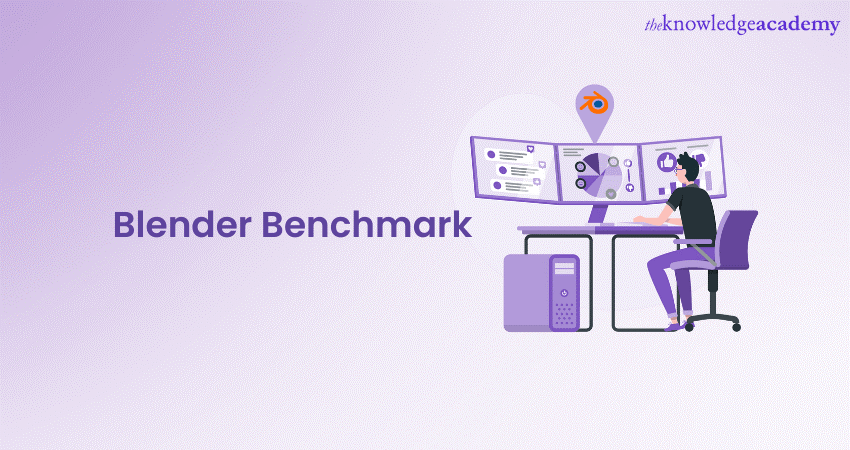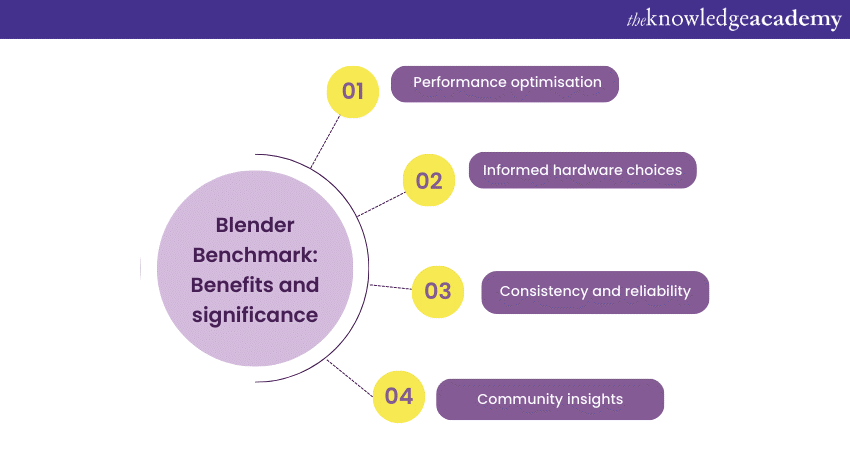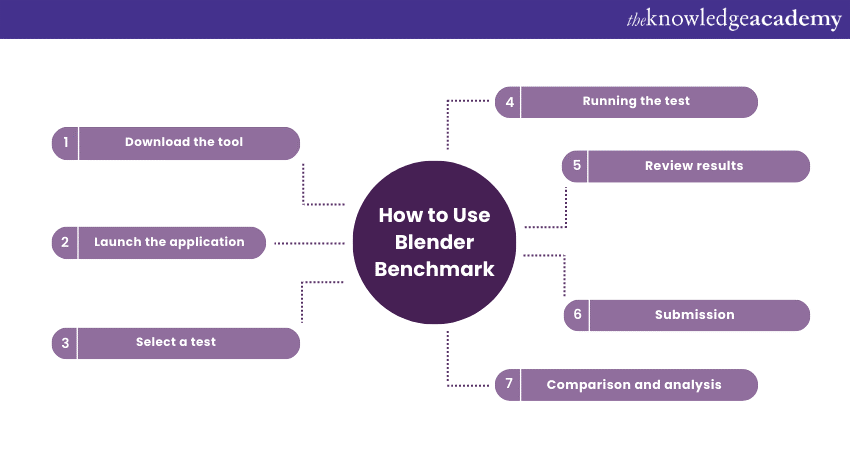We may not have the course you’re looking for. If you enquire or give us a call on 01344203999 and speak to our training experts, we may still be able to help with your training requirements.
Training Outcomes Within Your Budget!
We ensure quality, budget-alignment, and timely delivery by our expert instructors.

As the world of 3D content creation continues to evolve, performance and efficiency play a crucial role in ensuring seamless workflows. Blender, the renowned open-source 3D content creation suite, has introduced a powerful tool to assess the performance of your hardware and optimise your creative experience: the Blender Benchmark.
According to Blender, there are currently at least 3 million Blender users globally. In this blog, we'll dive into what the Blender Benchmark is, its significance, and how to use it effectively to enhance your Blender experience.
Table of Contents
1) Understanding Blender Benchmark in detail
2) Why Blender Benchmark Matters
3) How to use Blender Benchmark
4) Incorporating Blender Benchmark into the workflow
5) Conclusion
Understanding Blender Benchmark in detail
The Blender Benchmark is a vital tool that provides insights into the performance capabilities of hardware when running Blender tasks. Developed by the Blender Foundation, this tool serves as a standardised way to measure the efficiency and effectiveness of computer systems in handling various rendering and computational workloads within the Blender environment.
The primary purpose of this tool is to assess and quantify how well a hardware configuration can handle specific tasks in Blender, such as rendering complex scenes or simulations. By running benchmark tests, users gain valuable information about the strengths and limitations of their systems, enabling them to make informed decisions regarding hardware upgrades, optimisations, and workflow adjustments.
One of its key advantages is its ability to facilitate hardware comparison. Users can assess their systems against others, whether they're colleagues, peers, or the broader Blender community. This comparison not only helps users understand where their hardware stands in terms of performance but also provides insights into potential areas for improvement.
Contributing to the collaborative nature of the Blender community, the benchmark results are aggregated in a centralised database. This database showcases performance trends across different hardware configurations, assisting users in making well-informed decisions about their hardware investments.
In essence, it has become an indispensable tool that empowers Blender users of all skill levels to optimise their hardware setups, streamline their creative workflows, and harness the full potential of their systems for seamless and efficient 3D content creation.
Why Blender Benchmark Matters

The importance of the Blender Benchmark extends far beyond its role as a performance evaluation tool. For Blender users, from enthusiasts to professionals, this benchmark holds significant value due to its multifaceted significance and the array of benefits it offers.
a) Performance optimisation: The Blender Benchmark is a compass that guides users toward performance enhancement. By revealing hardware bottlenecks, users can fine-tune their systems for optimal efficiency. This not only accelerates tasks but also promotes a smoother workflow, allowing creative ideas to materialise without hindrance.
b) Informed hardware choices: For those venturing into hardware upgrades or system builds, the benchmark acts as an informed advisor. With quantifiable performance metrics, users can make well-grounded decisions, selecting components that align with their specific needs, whether it's rendering complex scenes or simulating intricate animations.
c) Consistency and reliability: This tool provides a constant reference point in a changing digital landscape. Its consistent testing methodology ensures that performance results are reliable and comparable over time. This reliability empowers users to track performance improvements or changes with confidence.
d) Community insights: Blender is a global community, and the benchmark amplifies this collective knowledge. By contributing results to the benchmark's database, users contribute to a dynamic pool of data that showcases hardware trends. This shared information assists others in making informed choices and staying up to date with the evolving hardware landscape.
Unleash Your Imagination: Elevate Your Skills with Blender Creator Training!
How to use Blender Benchmark

Using the Blender Benchmark tool to assess your hardware's performance is a straightforward process that offers valuable insights into optimising your Blender experience. Here's a simple guide on how to make the most of it:
a) Download the tool: Visit the official Blender Benchmark website and download the tool compatible with your operating system.
b) Launch the application: Once downloaded, open the application.
c) Select a test: Choose the specific benchmarking test you want to run. Options include CPU, GPU, and rendering tests.
d) Running the test: Initiate the selected test, and the tool will measure the time it takes to complete the task.
e) Review results: After completion, the tool will display results indicating your system's performance score and the time taken for the test.
f) Submission (optional): You can choose to contribute your results to the online benchmarking database, helping create a comprehensive performance overview.
g) Comparison and analysis: Compare your results with others in the community to gauge your hardware's performance. Use the insights to identify areas for improvement and optimisation.
The tool provides a user-friendly way to evaluate your hardware's capabilities, enabling you to make informed decisions about hardware upgrades and configurations. By regularly benchmarking your system, you can fine-tune your hardware settings to achieve optimal performance and enhance your Blender workflows.
Elevate Your Unity Projects with Expert 3D Modelling: Register in our Blender Training today!
Incorporating Blender Benchmark into your workflow
To effectively incorporate the Blender Benchmark into your workflow, consider the following tips:
a) Regular benchmarking: Integrate it as a regular practice to monitor performance changes over time.
b) Targeted optimisation: Identify performance bottlenecks highlighted by the benchmark and focus on optimising those areas.
c) Community participation: Contribute to the benchmark's online database by submitting your results, enriching the collective knowledge of hardware performance.
d) Informed hardware upgrades: Utilise benchmark results as a guide when considering hardware upgrades, ensuring you invest in components that enhance specific tasks.
e) Iterative improvement: Use benchmarking as a feedback loop to track the impact of optimisations and upgrades on your system's performance.
f) Workflow alignment: Align your Blender tasks with specific benchmark tests, tailoring your optimisations to tasks that directly impact your creative process.
g) Collaboration potential: Share benchmark results with peers and collaborators to exchange insights and strategies for achieving optimal performance.
h) Adaptive strategies: Continuously adapt your workflow based on benchmark results, allowing for dynamic adjustments as software updates and projects evolve.
i) Performance sustainability: By consistently incorporating the benchmark, ensure that your hardware's performance remains optimal, supporting your creative endeavours.
Unlock Your Creativity with Our Comprehensive 2D Animation Training!
Conclusion
The Blender Benchmark empowers Blender users to unlock their hardware's full potential, ensuring a smooth and productive creative journey. By assessing performance, comparing results, and optimising hardware configurations, users can elevate their Blender experience and stay ahead in the ever-evolving landscape of digital artistry.
Unlock Your Creative Potential with Our Cutting-Edge Animation and Design Training!
Frequently Asked Questions
Upcoming Office Applications Resources Batches & Dates
Date
 Blender Creator Training
Blender Creator Training
Fri 28th Jun 2024
Fri 20th Sep 2024
Fri 22nd Nov 2024







 Top Rated Course
Top Rated Course



 If you wish to make any changes to your course, please
If you wish to make any changes to your course, please


